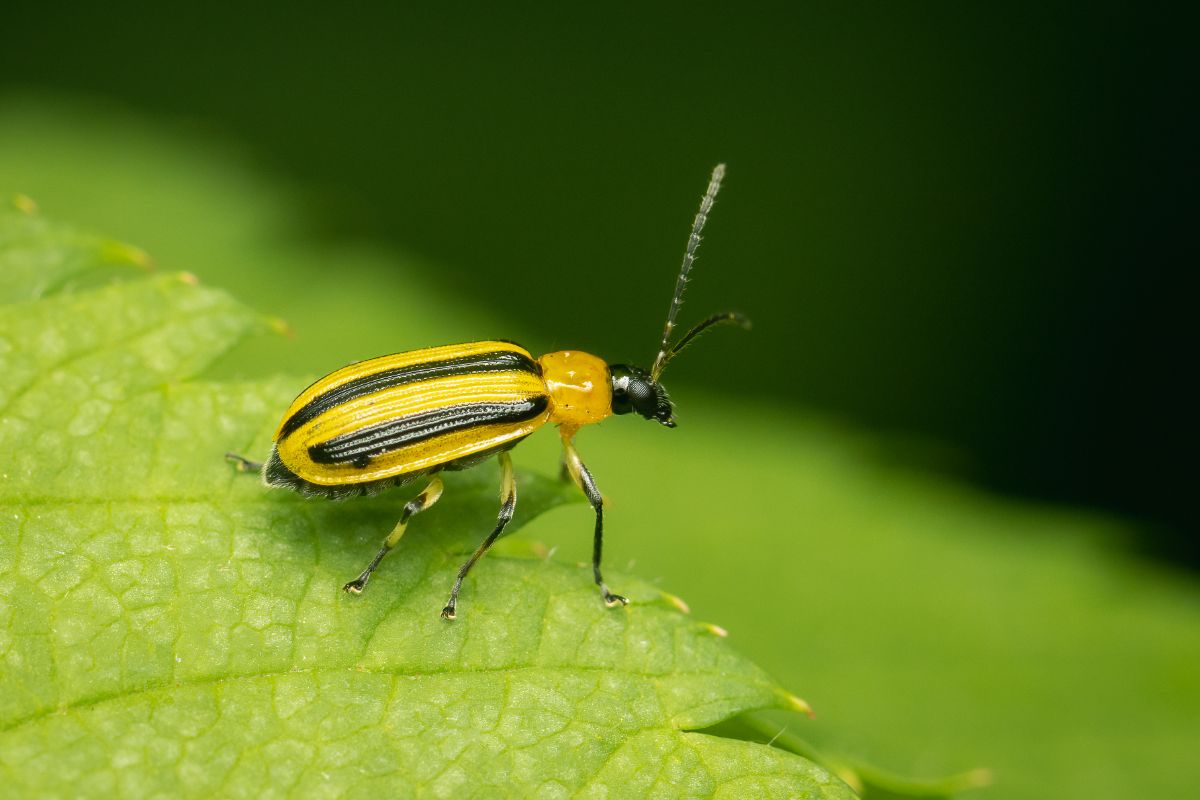
Growing your own cucumbers for pickling or fresh garden salads is one of the most satisfying feelings if you’re a home gardener. But if one morning you find your cucumber vines crawling with tiny yellow and black beetles, you’ll want to act fast. These miniscule pests are cucumber beetles, and they can devastate your cucumber crop, destroy fruit and even transmit plant diseases if left unchecked.
With the help of this guide, you’ll learn how to identify cucumber beetles and how to treat and prevent them with effective, chemical-free products and methods that are safe for you and any pollinators that may visit your garden.
Jump to:
- What are cucumber beetles?
- Signs of an infestation
- Top ways to control cucumber beetles organically
- Install row covers
- Handpicking
- Try companion planting
- Attract natural predators to your space
- Release the ‘Good Guys’
- Try some trap crops
- Plant resistant varieties
- Use nursery starts instead
- Use an organic insecticide
- Neem oil
- Diatomaceous earth
- Make a barrier with clay
- Add some aluminum foil
- Mulch, mulch, mulch!
- Practice good garden maintenance
- Conclusion
What are cucumber beetles?
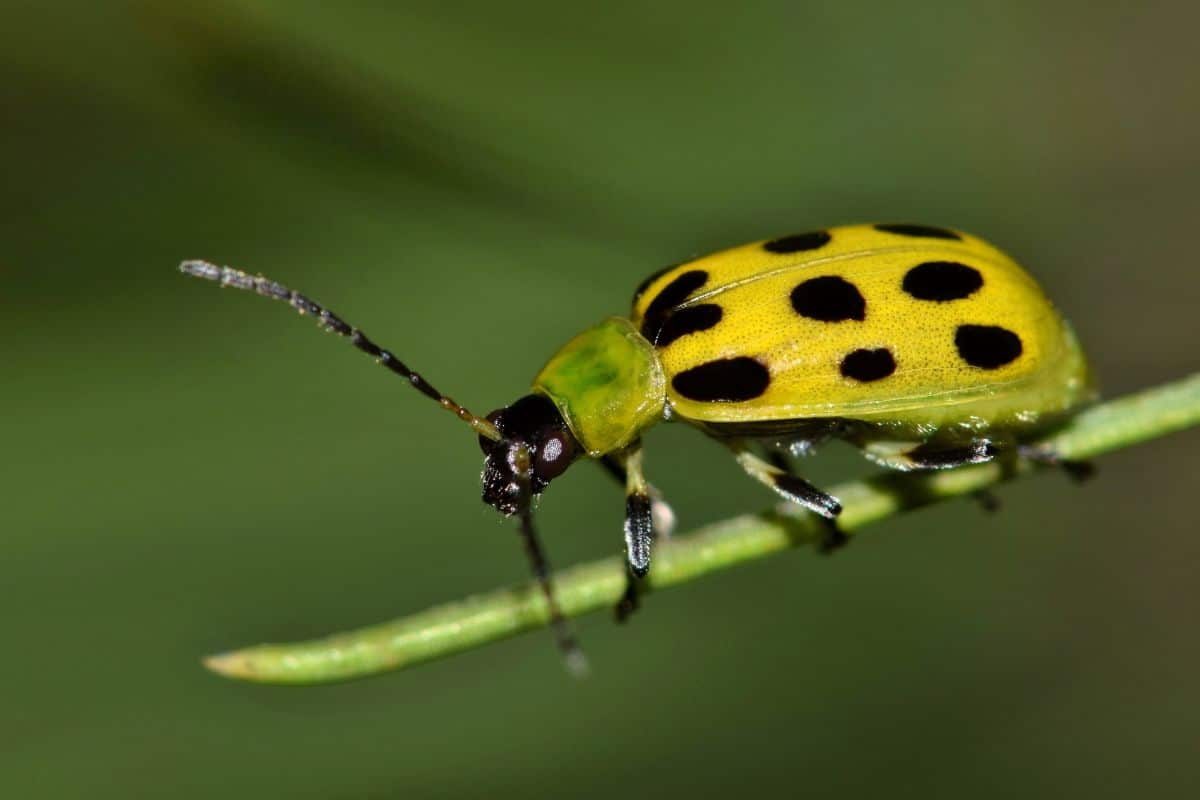
The cucumber beetles you’re most likely to encounter in your backyard belong to one of two species: striped or spotted cucumber beetles.
Striped cucumber beetles (Aclymma vittatum), as their implies, boast loudly colored carapaces that are striped with yellow and black. Specialist feeders, striped cucumber beetles pretty much limit their attacks to members of the cucurbit family, which includes cucumbers, zucchini, squash, pumpkins and melons. Laying their eggs at the base of cucurbit plants, when larvae hatch, they begin to feed on plant roots, causing significant damage to growing cucumbers, zucchini and other crops.
Spotted cucumber beetle (Diabrotica undecimpunctata), on the other hand, have yellow carapaces with black spotting. Much less specialized in what they eat than their striped cousins, spotted cucumber beetles with eat all members of the cucurbit family, but also other plants too, like tomatoes, corn, legumes and ornamentals. Unlike striped beetles, spotted varieties lay their eggs on grasses and corn, so their larvae cause less damage to cucumber crops than adults do.
While spotted cucumber beetles may munch on a variety of plants, both types of beetles target cucurbits, feeding on foliage, leaves and flowers and can cause quite a bit of damage.
Overwintering in old garden debris, beetles hatch in early spring when temperatures rise above 50° F, and begin to feed on the pollen, fruit and flowers of perennial plants. When cucurbits emerge later in the season, beetles then migrate to cucumber and melon patches, where they feed and begin to lay their eggs.
Striped cucumber beetles can lay 1500 eggs during their short, eight-week lifespan. Within two weeks after hatching, larvae pupate into adults and are soon mature enough to produce young of their own. For this reason, several generations of cucumber beetles can emerge in a single growing season, usually coming in waves spaced three to four weeks apart, meaning you’ll have to act fast if you spot any beetles in your garden.
Relatively large in size, cucumber beetles are about ⅕” in length and generally easy to spot in gardens where they tend to cluster together as they feed. Strong fliers, cucumber beetles can travel quite a bit of distance and can easily move yard to yard in a single neighborhood. When disturbed, beetles will fly away from target plants, often quite dramatically, which can help you spot them.
Signs of an infestation
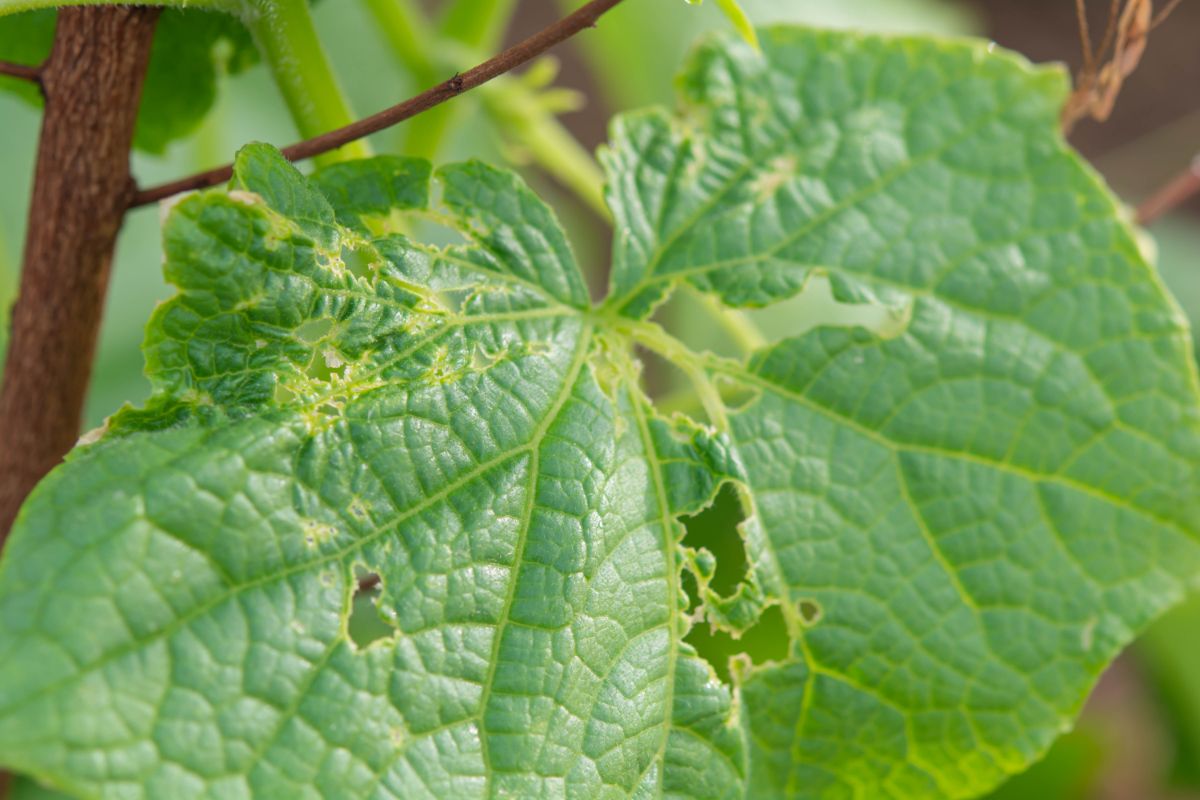
Thanks to their size and bright coloration, cucumber beetles are often easy to spot in your garden, especially when they congregate on host plants during feeding. Other signs that you’re dealing with a cucumber beetle infestation include:
- Stunted plants. Cucumber beetles can damage or weaken plants when they feed on them, which can reduce growth rates in garden crops. As a result, if you find some of your cucurbits look suspiciously stunted, it may be due to cucumber beetles.
- Leaf damage. Beetles use their mouthparts to rasp along leaf surfaces, causing damage primarily to leaf undersides at first. As feeding progresses, beetles may bore holes through leaves or skeletonize leaves entirely. A telltale sign that leaf damage was caused by these pesky beetles is if you find holes in your leaves that are beginning to brown at the edges.
- Reduced fruit production. Because cucumber beetles often feed on flowers, sometimes even devouring entire blooms, they can severely reduce your fruit yield. If you notice an underwhelming crop of cucumbers or squash, it may be because cucumber beetles munched off all your blossoms!
- Scarred fruit. Adult beetles often feed on fruit, like cucumbers, using their mouthparts to rasp against fruit skin while eating. This can lead to scarring on your fruits which, though not seriously damaging, may reduce marketability if your goal was to sell your extra produce at your local farmer’s market.
- Bacterial wilt. While no one wants to have their plants or produce damaged, most of the destruction cucumber beetles cause is relatively minor -- except when it comes to their ability to transmit bacterial wilt.When feeding, cucumber beetles may inadvertently transmit bacterial wilt to your plants, which is a common garden disease that can destroy entire crops quickly. Bacterial wilt causes issues with plants’ vascular systems and is uncurable. Affected plants will begin to wither, one branch at a time, and wilt can rapidly spread from crop to crop.
The only solution for bacterial wilt is to remove old plants, try to tidy up to prevent disease spread and start again, ideally, with resistant plant varieties. Because this disease can be so difficult to combat, it is very important to crack down on cucumber beetle invasions as soon as you see them.
Surprisingly, while cucumber beetles can do a lot of damage, unless they transmit bacterial wilt to your crops, a lot of the destruction is limited in mature plants. In general, most of the worst damage is seen in young seedlings, while older cucurbit plants have been found to be able to survive over 25% leaf loss by cucumber beetles without being severely impacted.
Top ways to control cucumber beetles organically
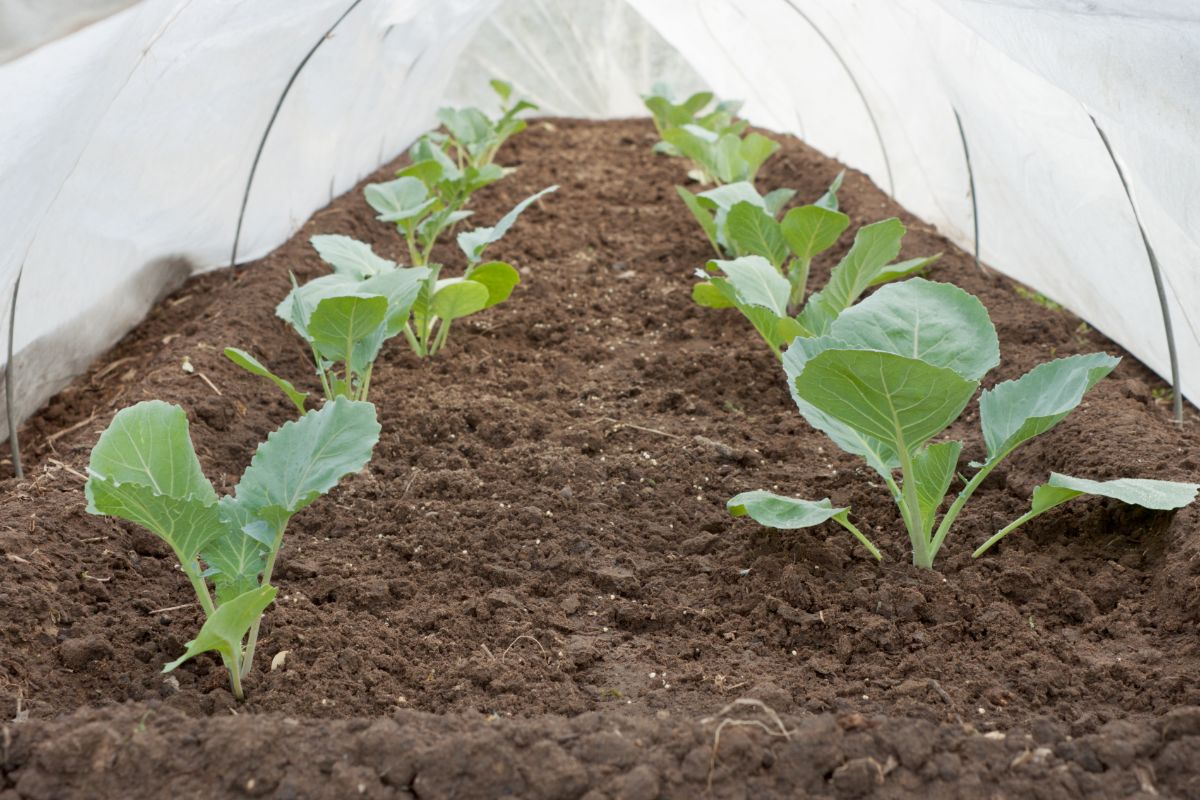
Though cucumber beetles can be annoying visitors in your garden, with a few skills and techniques, they can be easily repelled. Destructive as they are, cucumber beetles are some of the easier pests to eradicate, but you do need to act quickly and systematically to protect your produce and ornamentals.
Install row covers
Far and away the best way to prevent cucumber beetle infestations from the start, row covers installed at the beginning of the season can do wonders to protect crops from beetles and other pests too.
Made of very thin fabrics that are light enough to allow water and sunlight to penetrate through, but thick enough to keep pests out, floating row covers are installed in early spring before pests arrive. Row covers can be attached to stakes or hoops, or simply secured over crops with a few landscape staples.
For the simplest solution, premade row covers can be ordered online; however, you can make your own inexpensive ones by picking up some tulle from your local fabric store.
Because cucumbers and other cucurbits do need to be pollinated to produce fruit, after your plants begin to flower, peel back your row covers for a few hours during the day to allow pollinators to do their work. Alternately, if you don’t want to uncover your plants, simply hand-pollinate your plants with a makeup brush.
Handpicking
Cucumber beetles’ relatively large size and habit of congregating together make them easy to spot in the garden; however, they are adept at flying and will frequently elude capture if you try to collect them during daylight hours. Instead, try to go beetle hunting early in the morning or late in the evening when pests are less active.
To make handpicking even easier, coat your fingers with a layer of petroleum jelly, which will help beetles adhere, a particularly useful tactic if you’re trying to capture a bunch of beetles at a single time. Additionally, placing a piece of cardboard under your plants prior to handpicking can help you collect any beetles that try to escape capture by jumping from their host plant.
After capturing beetles, you can crush them but, for a less messy option, simply dump any cucumber beetles you find into a bucket of soapy water. For another option, if you have a backyard flock of ducks or chickens, try offering beetles to your fowls. They’ll appreciate the treat!
Try companion planting
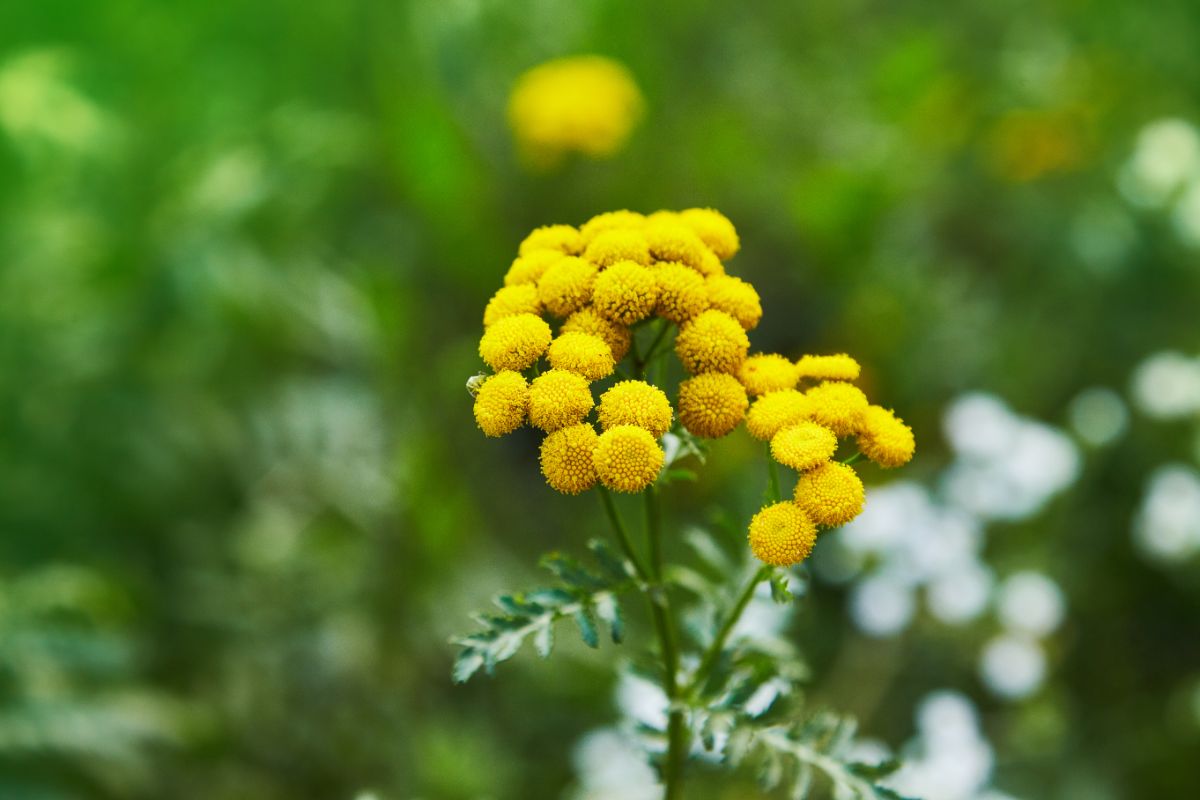
Companion planting is a gardening technique in which certain plants are planted together to mutually benefit each other. Those benefits can come in a range of forms, such as offering pest protection, increasing pollinator activity, providing helpful shade, encouraging plant growth, and more.
When it comes to companion planting for cucumber beetle control, try planting specimens that cucumber beetles find repellant, such as:
- Tansy
- Nasturtium
- Radishes
Another great option is to sow plants that attract beneficial insects, like tachinid flies and braconid wasps, which naturally prey on cucumber beetles and their eggs and larvae. Good companion plants for this purpose include:
- Borage
- Sweet alyssum
- Buckwheat
- Catnip
- Chamomile
- Feverfew
- Sweet clover
- Carrots
- Cilantro
- Dill
Attract natural predators to your space
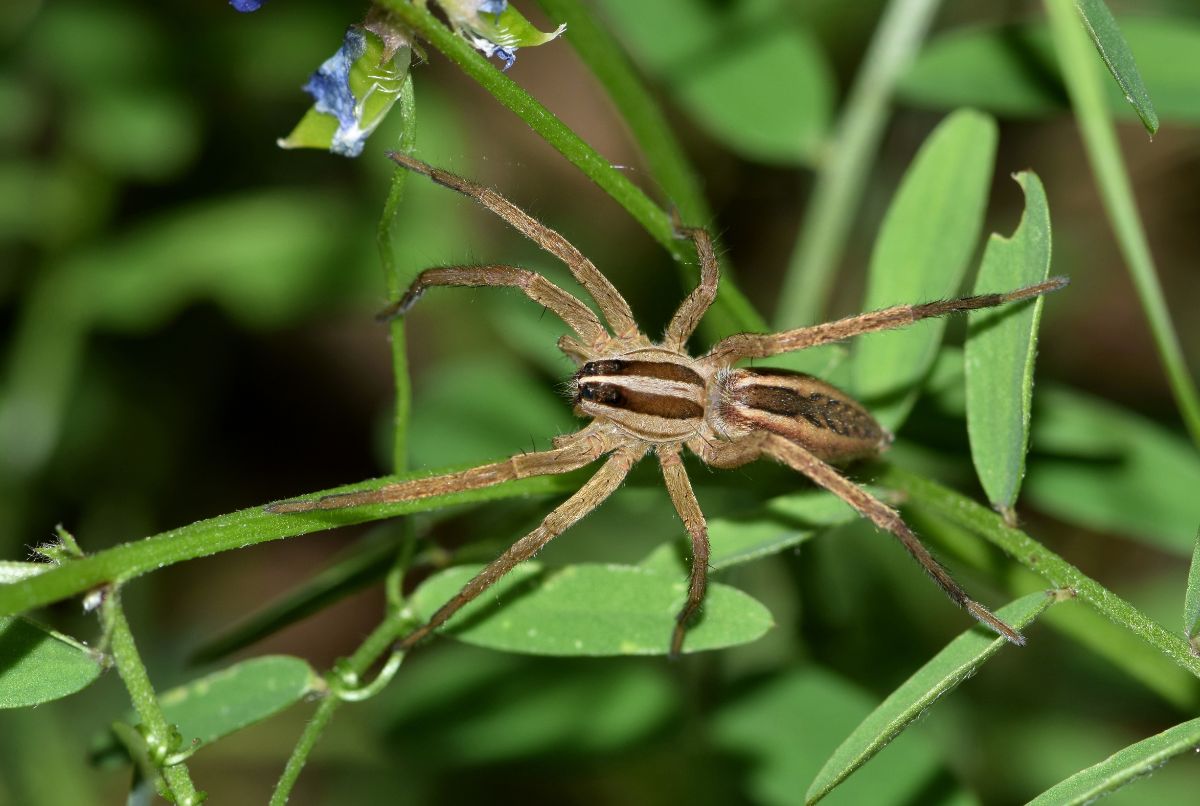
Wolf spiders, ground beetles and other carnivorous beetles, bats, birds, amphibians and reptiles are all very fond of cucumber beetles and will happily help you control your local population.
To support these natural predators, be sure to avoid using synthetic pesticides in your garden and, if you opt to use organic alternatives, understand how best to apply them to avoid exposing beneficial insects to the products you choose to use, no matter how “natural” they are.
Additionally, you can encourage predators to visit your yard by providing resources for them. This can include mulching your garden with straw to provide shelter for wolf spiders, adding birdhouses and bat houses to your space, planting crops birds loves, purchasing a few bird feeders and scattering bird baths or saucers filled with pebbles and water around your beds to provide critters with a ready source of clean, fresh water.
Release the ‘Good Guys’
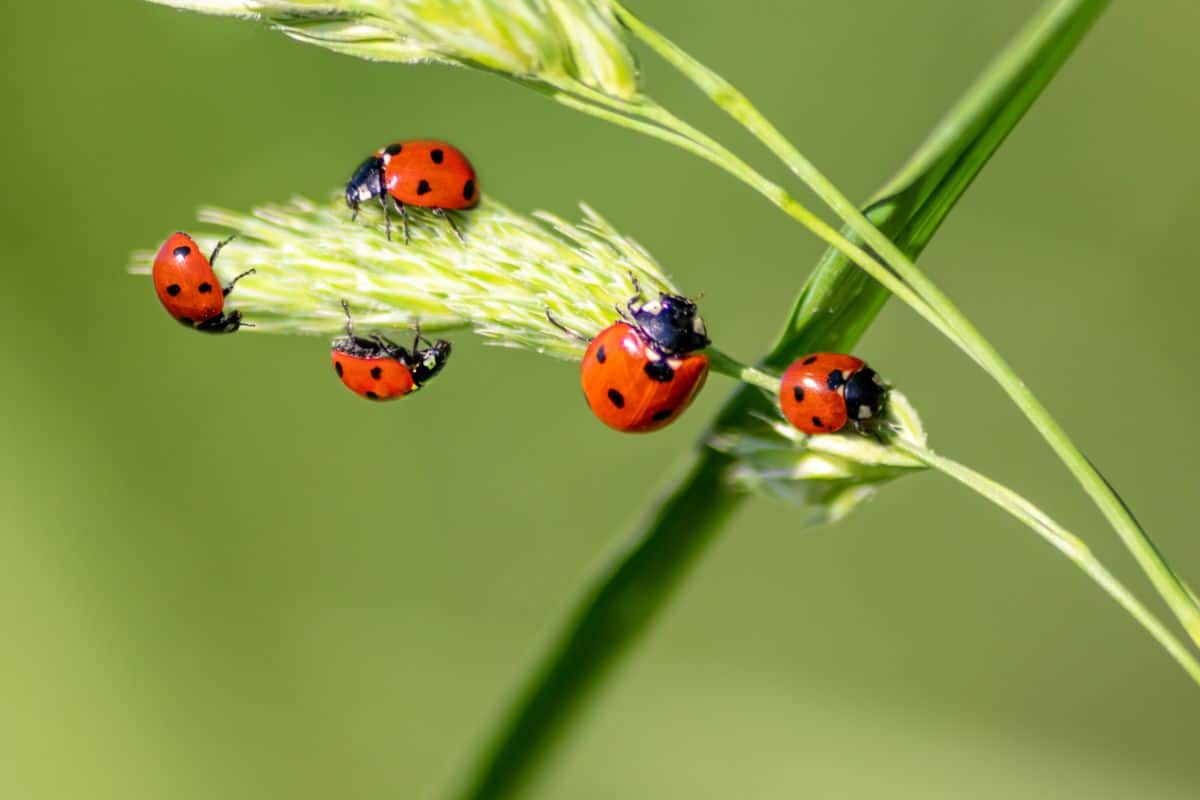
While there is no substitute for attracting cucumber beetle predators to your yard in terms of natural pest control, if you’re dealing with a large infestation or you want immediate results, try ordering some beneficial insects to release in your garden.
At various points during their lifecycle, cucumber beetles are vulnerable to common insect predators such as ladybugs, lacewings and assassin bugs. All three of these insect eating machines are available for order online. Just be sure to place your order when temperatures are safe for shipping and release your beneficial insects as quickly as possible to reduce shipping stress.
For a less common, but very effective, alternative, try releasing nematodes instead. Tiny, soil-dwelling worms, nematodes will parasitize cucumber beetles, causing death within six to ten days. Incredibly efficient despite their minute size, nematodes are an excellent choice to combat cucumber beetle larvae, as nematode applications can be directed straight at plant roots where root-eating larvae are present.
Try some trap crops
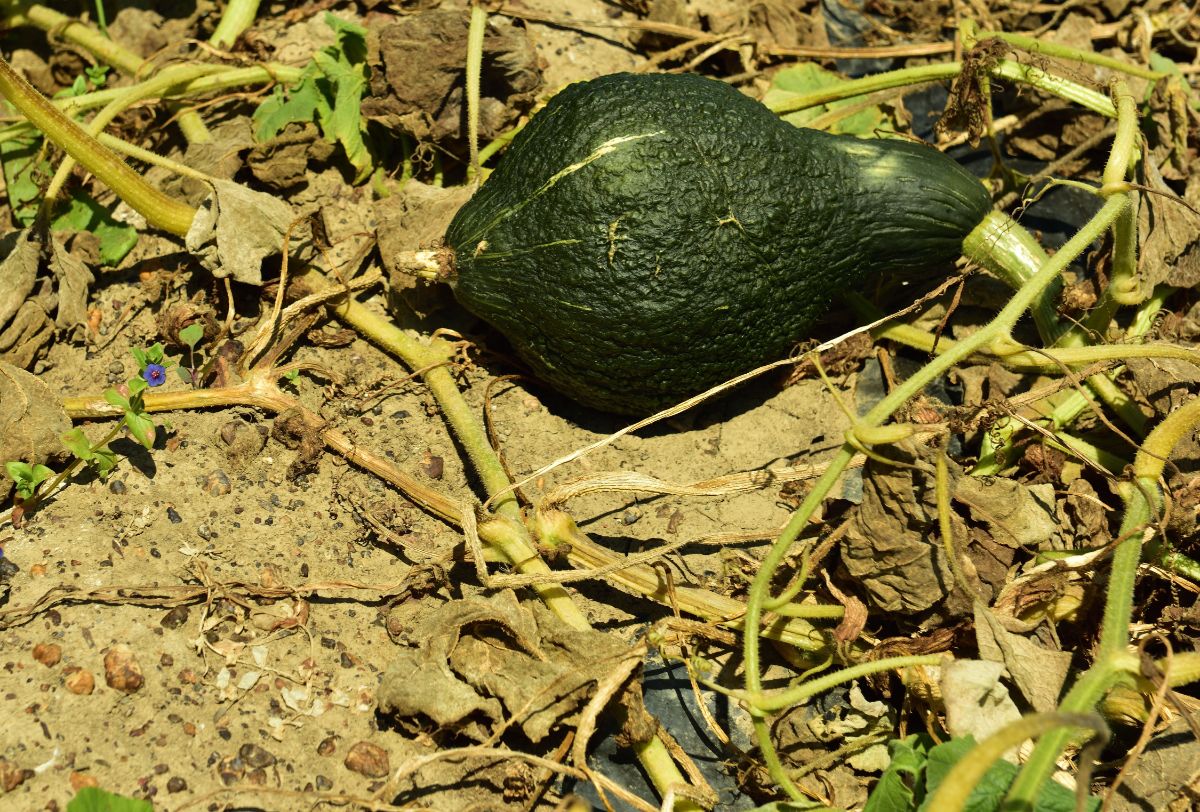
Trap crops are plants that are sown near your garden to draw pests away from more desirable crops. The characteristics that make a good trap crop are plants that are inexpensive, easy to grow and more desirable to pests than any plants in your garden. Additionally, to improve the effectiveness of trap crops, they should be planted close enough to your garden to encourage pests to migrate from your crops, but not so close to your garden that pests can easily travel back and forth.
For cucumber beetles, one of the best trap crops to plant is Hubbard squash, which has foliage and fruit cucumber beetles find difficult to resist. Cucumber beetles tend to like to forage around the perimeters of gardens so, for best effect, try planting your Hubbards in pots around the exterior of your garden. This will make for super quick beetle cleanup, particularly when combined with a garden vacuum to collect foraging beetles.
Plant resistant varieties
Some cucurbit varieties are simply more desirable that others, while certain species are quite off-putting to beetles due to their scent or, more commonly, their slightly bitter flavor. If you want to keep cucumber beetle damage to a minimum, try planting varieties that cucumber beetles hate, such as ‘Stono’ or ‘burpless’ cucumbers.
Even better, just look for varieties that are resistant to bacterial wilt, as there are more options to choose from and this will minimize the amount of problems beetles can cause in your garden. Good choices include:
- Cucumbers: ‘Tokyo Long,’ ‘Gemini,’ ‘Ashley,’ ‘Chinese Long’ and ‘Country Fair.’
- Pumpkins: ‘Howden,’ ‘Harvest Moon’ and ‘Connecticut Yellow Field.’
- Squash: ‘Waltham’ butternut and buttercup squash.
- Zucchini: ‘Black Beauty.’
- Watermelons: most varieties.
Use nursery starts instead
Growing your own plants from seed is fun and can save you lots of money, but if you’re dealing with a cucumber beetle infestation, it may not be worth your trouble. Instead, try growing plants from larger nursery starts, as this can give you a leg up on troublesome beetles.
As nursery starts are bigger, they are generally less susceptible to pest attack. What’s more, as they’ve spent the beginning of the season growing in a protected greenhouse, they’ll spend less time outdoors where pests, including beetles, can find them. This means, that they’ll be less likely to have trouble with any pests, beetles included.
Use an organic insecticide
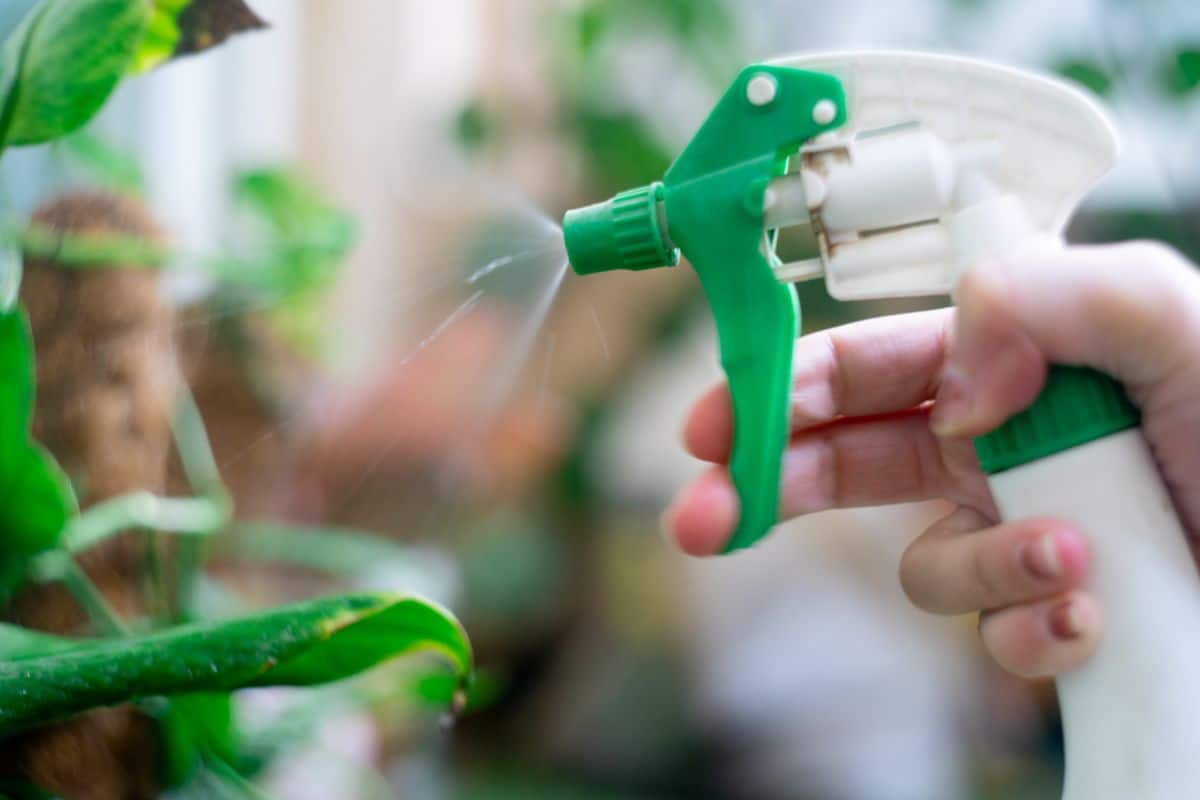
While it’s always best to prevent problems before they arise, if you’re struggling with an ongoing cucumber beetle infestation, there is hope. Today, there are plenty of all-natural insecticides on the market that are safe for use around your home and pets and are approved for organic gardening. Two great options include neem oil and diatomaceous earth.
Neem oil
Neem oil is a natural pesticide that is extracted from the neem tree. When sprayed on insects, it has a suffocating effect and can kill them nearly instantly.
To create your own natural insecticidal soap with neem oil, simply mix a few tablespoons of neem oil and a squirt of dish soap into a gallon of water.
To apply, spray your plants liberally with your soap spray and reapply, as needed, every 7 to 10 days, until you no longer see signs of infestation.
Because neem oil is a generalized pesticide, it doesn’t discriminate against the pests it kills, so avoid spraying it on any beneficial insects or pollinators, as well as any plants that are flowering. Additionally, neem oil should only be applied in the evening to prevent sunburn to your plant leaves.
Diatomaceous earth
Made from the sharp, fossilized remains of tiny marine organisms known as diatoms, diatomaceous earth (DE) is a fine, white powder that causes desiccation and death in any insects that crawl across it.
To apply, simply sprinkle DE on your infested plants or apply a ring of it at the soil line around your cucurbit vegetables. As with neem oil, DE is a generalized pesticide, so avoid applying it anywhere where beneficial insects and pollinators may visit and never apply it to plants in flower.
DE only works when dry, so it should be reapplied frequently throughout the growing season, and particularly after periods of rain or high humidity, for maximum effect.
Make a barrier with clay
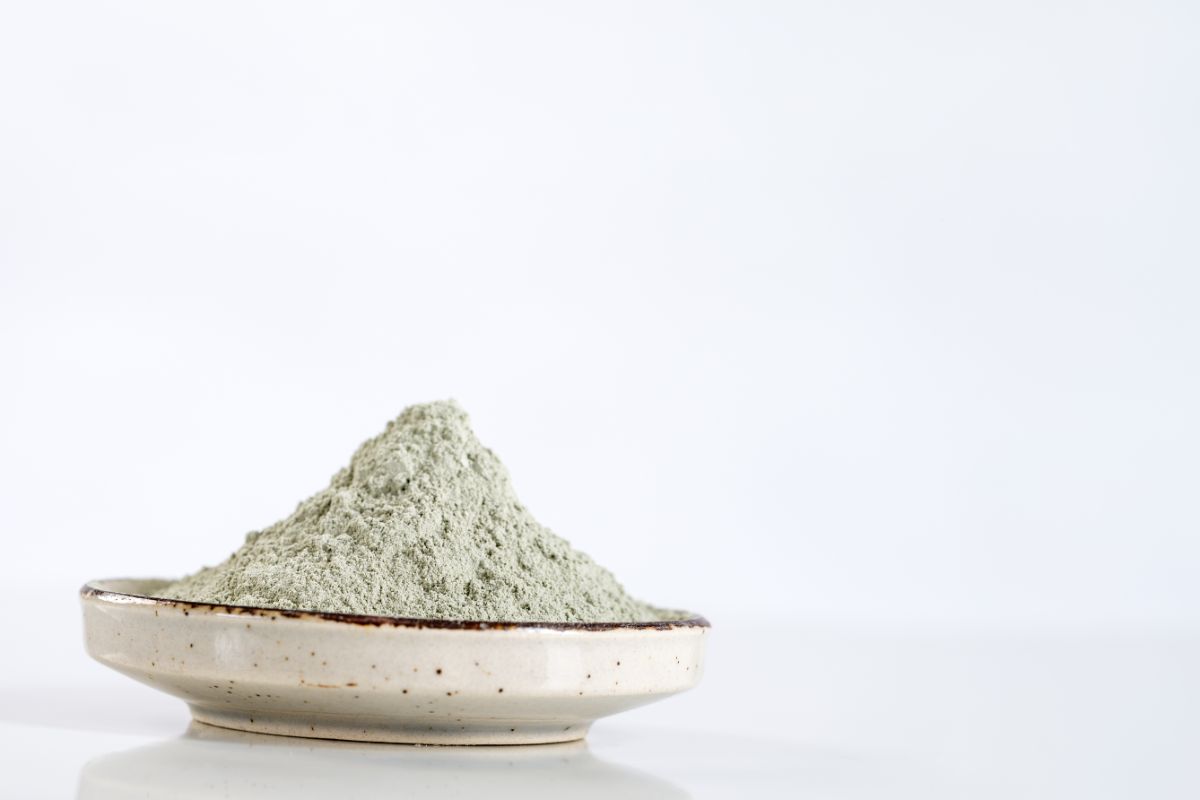
Kaolin clay is a naturally occurring clay that can be used as a simple barrier in your garden to protect plants from predation. Simply sprinkle your clay on any plant that seems to be drawing cucumber beetles in and let the product do the work.
Once in place, kaolin clay will help disguise plants from predator attack by making them less desirable. The clay, though non-lethal to pests, can cause irritation to them by sticking to their legs or antennae. Busy cleaning themselves, insects, like cucumber beetles, will leave your plants alone and go find easier targets to munch on.
Add some aluminum foil
For a super simple garden hack, try spreading a piece of aluminum foil beneath your cucurbit plants, making a slit in the sheet to give space for your plant’s stem.
Cucumber beetles don’t like to feed near the reflective surface of aluminum foil and the light it shines on the underside of plant leaves can really confuse them. Although this isn’t the most high-tech option around, many organic gardeners swear by it.
Mulch, mulch, mulch!
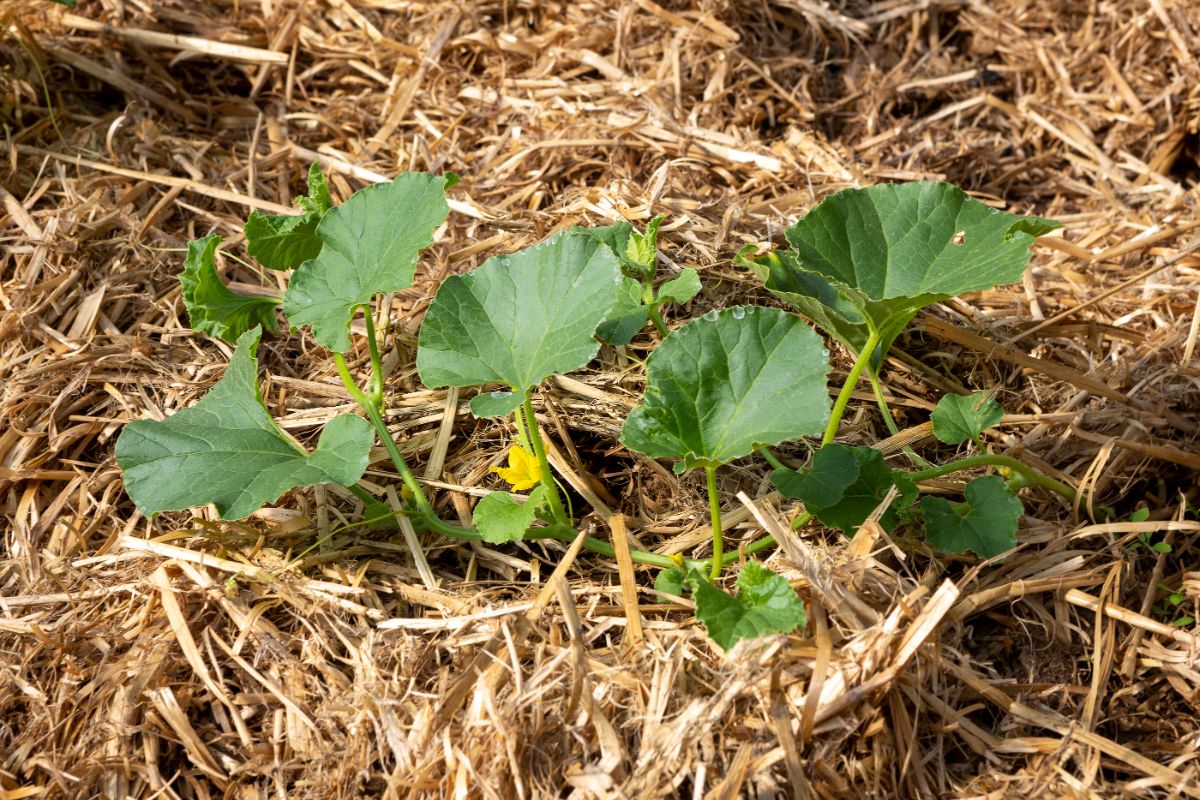
There are so many incredible benefits of using organic mulch in your garden, from moisture retention to weed control. However, certain mulches can additionally provide some help against cucumber beetles.
Straw mulch, in particular, has been found to repel beetle infestations. This is partly because straw impedes beetles’ movement, making it more difficult for them to maneuver around garden spaces. Beyond that, straw mulch has plenty of loose air space for beetles’ natural predators, like wolf spiders, to shelter in. This can provide an added boost of natural pest control to the mix that is certain to help reduce beetle populations.
When choosing straw mulches, make sure you’re purchasing weed-free straw and know your supplier. Some straw and hay may be sprayed with insecticides or herbicides you don’t want in your garden, so don’t be afraid to ask if your straw has been sprayed with anything before purchasing.
An added benefit of using mulch in your garden is that, as it breaks down, it will naturally enhance your soil structure and nutrient composition. Plants grown in richer soil have been found to be better able to resist pest attack, including damage caused by cucumber beetles. This is because richer soil promotes plant health and plants’ natural immunity. For a little extra “oomph,” try adding mulch and compost to your garden to really strengthen your plants.
Practice good garden maintenance
As cucumber beetles can overwinter in old garden debris, a good fall cleanup of your yard can do wonders for preventing future infestations. When disposing of old plant matter, be sure to burn it, bag it and place in the trash or compost it using hot composting methods only. This will guarantee that any beetles from last year’s garden won’t find their way into next spring’s produce.
Beyond autumn cleanup, crop rotation is an important part of preventing cucumber beetles and any other garden pest. A good rule of thumb for cucumbers is to wait three to four years in between planting cucumbers in the same spot. This will make certain that any pests that attacked past crops will be far gone by the time you plant more cucumbers in that area. That said, because cucumber beetles are very strong fliers, crop rotation alone is not enough to protect against future infestations and should be combined with other methods and control techniques to increase its effectiveness.
Conclusion
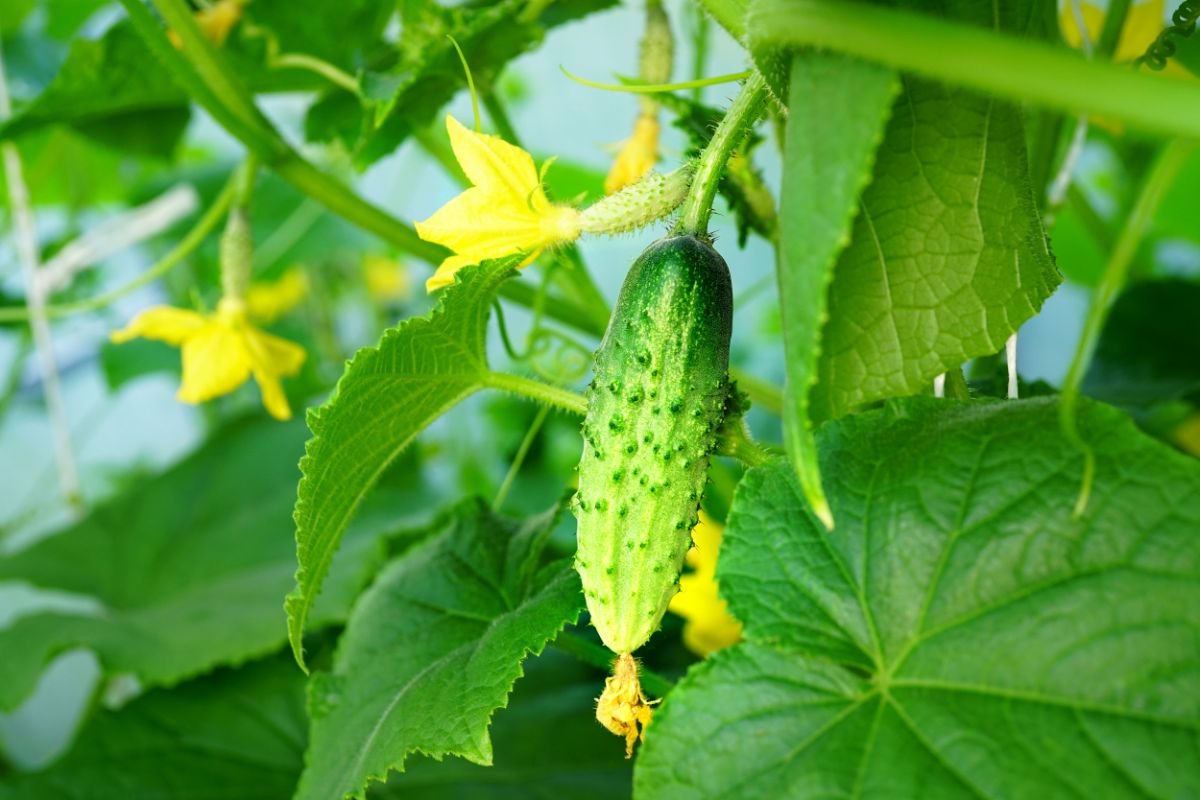
Keeping your garden pest-free is a step-by-step process and one that requires regular attention. One year your tomatoes may be targeted by hornworms. The next year, your cucumbers may suffer from the voracious appetites of cucumber beetles. Whatever the pest, there is a solution, but the most important thing is that you keep a careful eye on your plants and act as soon as you detect a problem.
A few cucumber beetles on a single plant won’t cause a lot of damage, especially if you handpick those adult beetles before they mate. If, however, you take a more hands-off approach to your garden, you may find yourself at the mercy of several generations of hungry beetles in a single growing season.
Keeping your garden tidy and well-maintained and installing preventative measures, like floating row covers, at the beginning of the season will give you a distinct advantage over any pests that decide to move into your backyard. If pest problems do arise, with the help of this guide, you know what to do. Grab some kaolin clay or maybe a spray bottle with some handy neem oil, or simply get busy handpicking. There is no reason to fret at the sight of some cucumber beetles. As an organic gardener, you’ve got plenty of effective tools and techniques at your disposal.
References:
- Pleasant, Barbara. “Organic Cucumber Beetle Control.” Mother Earth News. 11 June 2022. 24 April 2013.
- Snyder, William. “Managing Cucumber Beetles in Organic Farming Systems.” eOrganic. 11 June 2022. 11 January 2022.

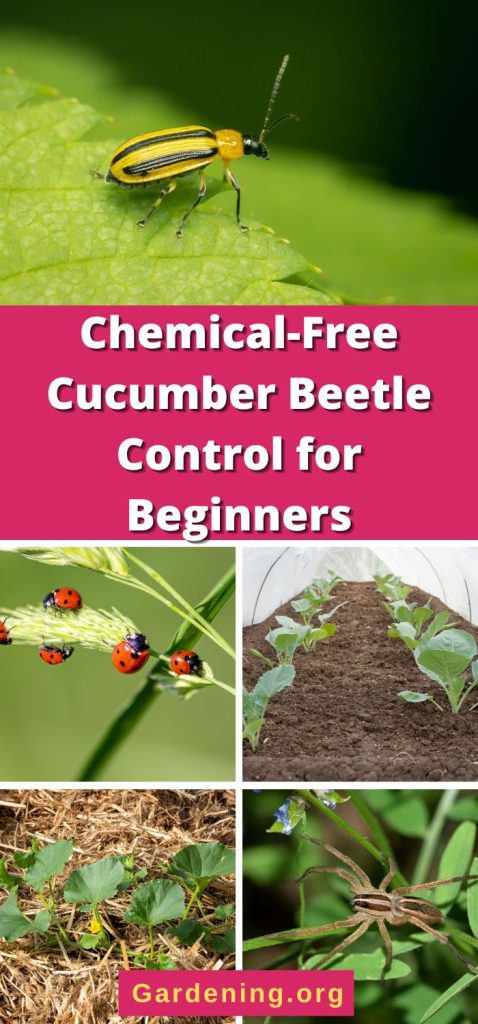
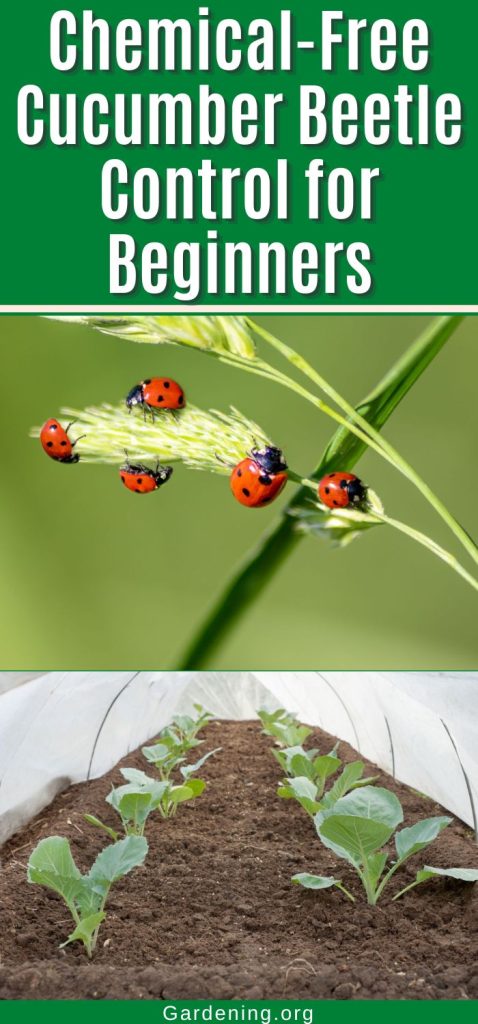
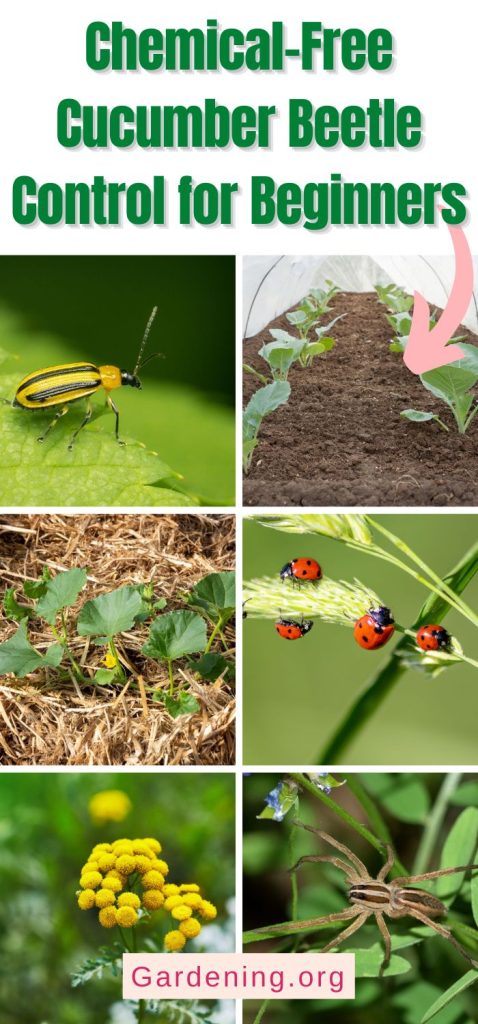
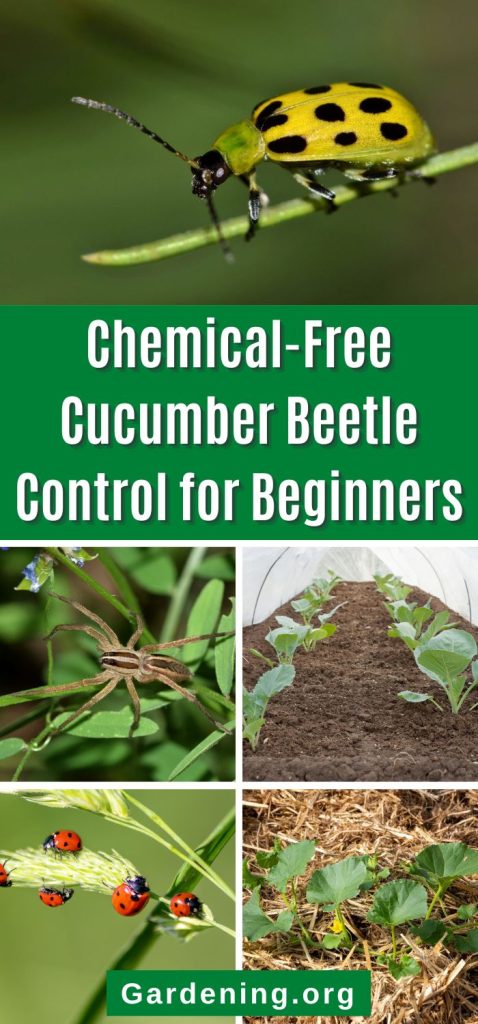




Leave a Reply